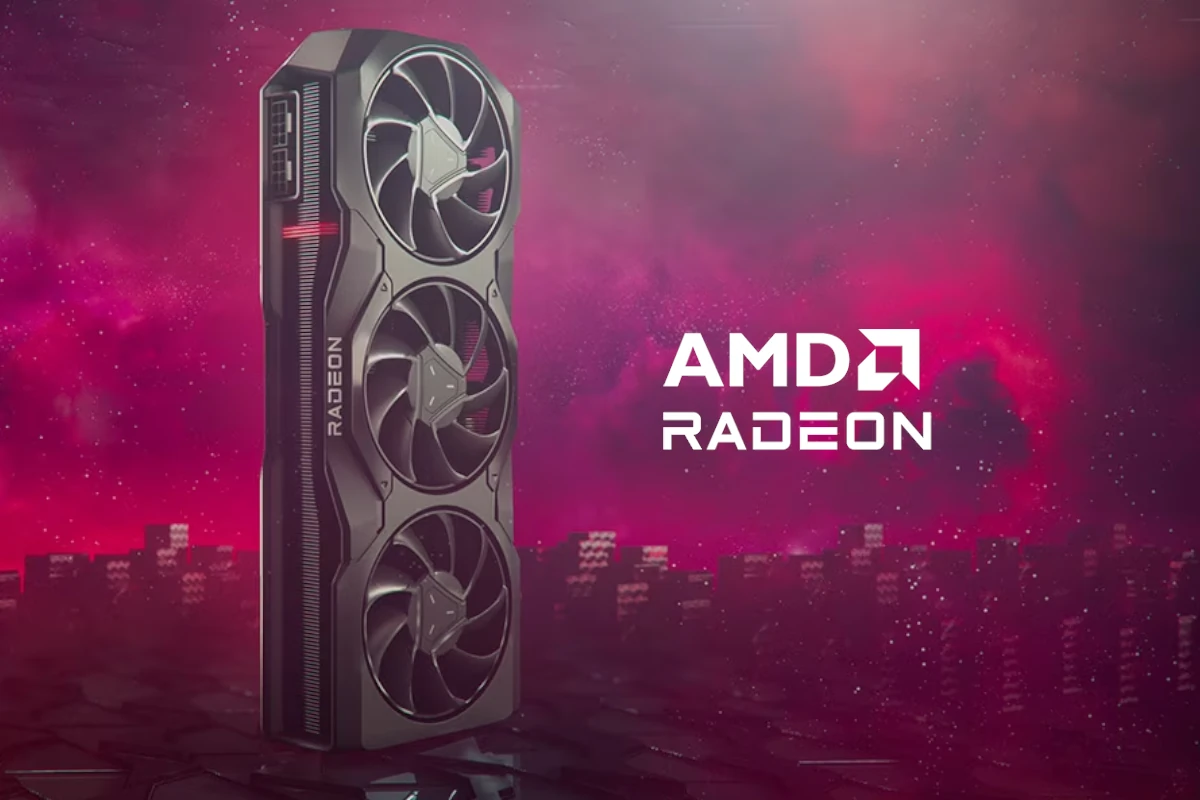The tech and PC gaming industry is on the edge of its seat as AMD is to officially lift the curtain on its highly anticipated Radeon RX 9000 Series graphics cards. The February 28, 2025, launch event goes live at 8:00AM Eastern (5:00AM Pacific) and marks the introduction of RDNA 4, AMD’s next-generation GPU architecture, promising substantial performance gains, improved ray tracing, and enhanced AI-driven features.
We’re expecting to get lots of details on the two major card chipsets including specifications and pricing information. We’re also expecting AMD to reveal how their lineup stacks up against the new RTX 50 series cards that have already (or will) launch this year – including the RTX 5090, RTX 5080, RTX 5070, and RTX 5070 Ti.
You can watch the YouTube even when it goes live or watch the recording at the link below (Scheduled for Feb 28, 2025 at 8AM EST/5AM PST):
Or by visiting the official AMD Gaming YouTube Streams Page here: https://www.youtube.com/@Gaming-AMD/streams
AMD Radeon RX 9000 Series: A New Era for RDNA 4
Set to hit the market in early March, the Radeon RX 9000 lineup is poised to redefine gaming performance. While AMD has kept tight-lipped on full specifications, industry insiders expect the launch to focus on the RX 9070 XT and RX 9070 as the flagship models. These GPUs are rumored to feature:
- Higher clock speeds and efficiency – Thanks to TSMC’s advanced 4nm process, RDNA 4 GPUs are expected to deliver better power efficiency than their RDNA 3 predecessors.
- Improved ray tracing – While AMD has lagged behind NVIDIA in ray tracing performance, the RX 9000 series is rumored to feature dedicated AI-driven upscaling (possibly FSR 4.0) to compete with NVIDIA’s DLSS and Intel’s XeSS.
- More VRAM for 4K gaming – The RX 9070 XT is expected to feature 16GB of GDDR7 memory, making it an ideal choice for high-resolution gaming.
AMD’s Strategy: Taking on NVIDIA and Intel
The timing of this launch is no coincidence. With NVIDIA’s RTX 5000 series expected later this year and Intel ramping up its Arc GPU division, AMD is strategically placing itself in the spotlight before its competitors strike.
One of AMD’s biggest selling points has been price-to-performance value. If the RX 9000 series follows AMD’s traditional pricing strategy, these GPUs could provide an excellent alternative to NVIDIA’s premium-priced RTX lineup, making high-end gaming more accessible to consumers.
What to Expect Next
AMD’s corporate VP, David McAfee, has called February 28 a “highly important date for next-gen graphics technology”, hinting at major breakthroughs. Enthusiasts are particularly eager to see if AMD unveils a high-end competitor to the RTX 4090, a segment where the company has historically struggled to match NVIDIA’s dominance.
Additionally, more mid-range models, such as the RX 9050 and RX 9050 XT, could be announced later in the year, bringing RDNA 4’s efficiency and power to a wider audience.
For those eager to watch the unveiling, AMD’s live-streamed event will be available on YouTube, offering first-hand insights into specs, pricing, and availability.
Final Thoughts: Will the Radeon RX 9000 Series Shake Up the Market?
With early March retail availability, consumers won’t have to wait long to see if AMD’s latest GPUs can deliver on the hype. The Radeon RX 9000 series represents a pivotal moment in AMD’s battle against NVIDIA, and how well it performs could shape the gaming GPU market for years to come.
Key Takeaways
- AMD’s Radeon RX 9000 series launch event streams today at 8 AM EST with retail availability beginning in early March.
- The new graphics cards will feature RDNA 4 architecture with flagship models likely including the RX 9070 and RX 9070 XT.
- David McAfee has positioned this release as a significant advancement in graphics technology for gamers and tech enthusiasts.
Technical Innovations and Speculations
AMD’s Radeon RX 9000 series will introduce significant technical advancements built on the new RDNA 4 architecture. The upcoming GPUs promise improved power efficiency, enhanced ray tracing capabilities, and competitive performance against rival offerings.
RDNA 4 Architectural Advancements
RDNA 4 represents AMD’s next evolutionary step in GPU design, focusing on efficiency and specialized computing. The architecture features redesigned Compute Units with improved throughput and better power management. Engineering refinements have reportedly increased instructions per clock (IPC) by approximately 15-20% over the previous RDNA 3 design.
Ray tracing capabilities have received significant attention, with dedicated hardware accelerators that could double ray tracing performance compared to the RX 7000 series. AMD has also implemented new AI-optimized processing elements to compete with NVIDIA’s tensor cores.
The memory subsystem has been enhanced with a wider bus interface and faster GDDR6 memory, potentially offering bandwidths exceeding 500 GB/s on flagship models. Navi 48, the rumored die powering the top-tier cards, is expected to utilize a more efficient 5nm manufacturing process.
Performance Benchmarks and Expectations
Preliminary benchmarks suggest the RX 9070 XT could deliver 25-30% better rasterization performance than the previous RX 7900 XT. For 4K gaming, this puts it firmly in competition with NVIDIA’s RTX 4080 Super and potentially the upcoming RTX 5070.
The base RX 9070 is expected to feature approximately 56-60 Compute Units, while the XT variant may push that to 72-80 CUs. Boost clocks are rumored to reach up to 2.8 GHz, though thermal constraints might limit sustained performance.
Expected Performance Tiers:
- RX 9070: Excellent 1440p gaming, entry-level 4K
- RX 9070 XT: Premium 4K gaming experience
FSR 4 (FidelityFX Super Resolution) is likely to debut alongside these cards, bringing AI-enhanced upscaling to further boost frame rates at high resolutions. Power consumption appears more controlled than previous generations, with TDP estimates ranging from 250W for the base model to 320W for the XT.
Comparison with Competitors
AMD positions the RX 9000 series directly against NVIDIA’s RTX 5000 series, which is expected later this year. The RX 9070 XT likely targets the RTX 5070 or 5070 Ti segment, emphasizing better price-to-performance ratios.
In raw rasterization, AMD may hold an advantage at specific price points. However, NVIDIA typically maintains an edge in ray tracing performance and has a more mature AI implementation with DLSS technology.
Competitive Analysis:
| Feature | RX 9070 XT | RTX 5070 (Expected) |
|---|---|---|
| Rasterization | Strong | Strong |
| Ray Tracing | Improved but trailing | Industry-leading |
| Power Efficiency | Better than previous gen | Typically excellent |
| MSRP | Potentially more aggressive | Premium pricing |
Intel’s Arc GPUs remain competitive in the mid-range but don’t currently challenge these high-performance segments. AMD’s integration potential with Ryzen CPUs could offer additional system-level optimizations for users building all-AMD systems.
Market Impact and Consumer Information
AMD’s Radeon RX 9000 series launch represents a significant shift in the graphics card landscape. The company’s aggressive pricing strategy and early March availability timeline will likely reshape competitive dynamics between AMD and NVIDIA.
Pricing and Availability
The Radeon RX 9000 series is set to hit shelves in early March 2025, just days after today’s official unveiling event. AMD has strategically positioned the RX 9070 at $499 and the RX 9070 XT at $599, targeting the mainstream enthusiast market.
Pre-orders will begin immediately following today’s announcement, with major retailers including Newegg, Amazon, and Best Buy expected to carry stock. AMD partners like MSI, ASUS, and Gigabyte will offer custom variants at slightly higher price points.
Initial stock levels are predicted to be more robust than previous generations. AMD has reportedly improved its supply chain to avoid the shortages that plagued earlier launches.
Anticipated Impact on the Graphics Card Market
The RX 9000 series arrives at a pivotal moment as NVIDIA rolls out its Blackwell-based RTX 50 series. AMD’s competitive pricing—positioning flagship models $100-200 below comparable NVIDIA offerings—aims to disrupt NVIDIA’s market dominance.
RDNA 4 architecture brings significant performance improvements, especially in rasterization and memory bandwidth. Early benchmarks suggest the RX 9070 XT could match or exceed the RTX 4080 in traditional gaming workloads while consuming less power.
Industry analysts expect AMD to capture additional market share in the $400-600 segment. This increased competition will likely benefit consumers through:
- Potential price adjustments from NVIDIA
- Improved feature sets across both companies’ product lines
- More frequent driver updates and optimizations
The mainstream focus of RDNA 4 indicates AMD is prioritizing volume sales rather than competing for the absolute performance crown.
Frequently Asked Questions
AMD’s Radeon RX 9000 series launch brings significant advancements in GPU technology with updates to specifications, performance metrics, and pricing. Tech enthusiasts are eager to learn about the improvements over previous generations and potential market impact.
What specifications can we expect from the Radeon RX 9000 series?
The flagship models of the RX 9000 series will include the RX 9070 and RX 9070 XT, both built on the new RDNA 4 architecture. These cards will feature improved core counts and higher clock speeds compared to their predecessors.
Memory configurations are expected to include faster GDDR6 VRAM with wider memory buses to handle increasingly demanding gaming workloads. The cards will likely support the latest display technologies including HDMI 2.1 and DisplayPort 2.1.
Power efficiency has reportedly been a major focus for AMD with this generation, targeting better performance-per-watt ratios than the RX 7000 series.
How does the Radeon RX 9000 series compare to its predecessors?
The RX 9000 series represents AMD’s fourth generation of RDNA architecture, building upon the foundations established with the RX 7000 series. These new GPUs feature redesigned compute units and enhanced ray tracing capabilities.
The architecture improvements focus on better gaming performance at both 1440p and 4K resolutions. Reports suggest that AMD has made significant strides in ray tracing performance, an area where previous generations lagged behind competitors.
Thermal design has also been refined, with the new cards expected to run cooler than the RX 7000 series under similar workloads.
What performance improvements have been made in the Radeon RX 9000 series over the previous generation?
Early benchmarks suggest the RX 9000 series will deliver approximately 20-30% better performance in traditional rasterization compared to equivalent models in the RX 7000 lineup. This improvement comes from both architectural enhancements and higher clock speeds.
Ray tracing performance has reportedly seen even greater gains, with up to 40% better performance in ray-traced titles. These improvements address one of the key criticisms of previous AMD graphics cards.
The cards include enhanced AI acceleration capabilities, responding to the growing importance of AI workloads in both gaming and content creation applications.
What pricing details have been announced for the Radeon RX 9000 series?
While official pricing will be revealed during today’s launch event, industry analysts expect the RX 9070 to be priced competitively against similar offerings from NVIDIA. Price estimates place the RX 9070 around $499-549 and the RX 9070 XT around $599-649.
AMD typically positions its cards at slightly lower price points than equivalent NVIDIA models to provide better value propositions. This pricing strategy has proven successful for AMD in recent generations.
Regional pricing may vary due to taxes, import duties, and local market conditions.
What are the anticipated release dates for the different models within the Radeon RX 9000 series?
According to AMD’s announcements, the RX 9000 series will hit retail shelves in early March 2025, very shortly after today’s unveiling event. The initial launch will likely feature the flagship RX 9070 and RX 9070 XT models.
Mid-range and entry-level cards in the series are expected to follow in the subsequent months. This staggered release approach allows AMD to focus production capacity on high-margin products initially.
Availability at launch remains a concern for many consumers, given the supply challenges that have affected previous GPU launches across the industry.
How will the Radeon RX 9000 series impact the current GPU market?
The introduction of AMD’s new GPU lineup will likely drive competitive price adjustments across the market. NVIDIA may respond with price cuts to their RTX 40-series products or accelerate their plans for next-generation offerings.
Existing RX 7000 series cards will probably see significant discounts as retailers clear inventory. This creates opportunities for budget-conscious gamers looking for good value rather than cutting-edge performance.
The timing of this launch places pressure on the entire GPU market at a critical moment when both gaming and AI workloads are demanding more powerful graphics solutions.







